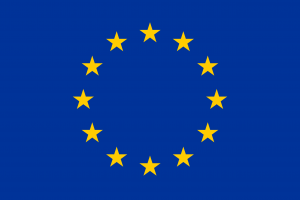“The Earth is Flat – How to Read Media” project: results

The project team held workshops for pupils, training for teachers, interactive video lectures for students and public lectures for wide audience, produced media content and supported media literacy initiatives.
“If we say that children are born with smartphones and grow with them in hand, then let it be comfortable for them. We can give them tools and our vision. We can’t restrict them but we can teach them what is good and what it bad. If we succeed in it, then it will be the best what a teacher can do for a kid,” – Dmitry Shilov, a teacher of journalism and director of development of the school newspaper from Perm.
The experts of the project “How to Read Media?” told teenagers and adults how to find a way in the contemporary online-environment, tell facts from fakes, critically assess what the media offer and stand up for their rights and express their opinion, debate online correctly and react to trolling adequately, confront cyberbullying.
The trainers shared their knowledge and expertise and never taught “what is right and what is wrong”. There was always a dialogue. A lot of teenagers were surprised with it.
“I like it that no one treats us like kids. Even though I have often faced a situation when teenagers are not taken seriously. It is wrong not to take teenagers for personalities who can think, discuss and give something to the society,” – says Polina from Arkhangelsk who participated in one workshop.
The project events were a success in all the regions of Russia. They quite often became the main events in a city. More than 900 people took part in the workshops, though initially it was planned to be 4 times less. More than 250 students took part in the interactive video lectures. About 300 teachers attended 14 trainings. Public lectures, two online-discussions with media experts and an online-conference brought together 1800 people.
The project team held events in 16 cities of Russia: Moscow, Ekaterinburg, Belgorod, Chelyabinsk, Kazan, Nizhny Novgorod, Novosibirsk, St Petersburg, Syktyvkar, Yaroslavl, Vladivostok, Kaliningrad, Arkhangelsk, Tomsk, Voronezh and Perm.
During the pandemic, the project went online: webinars, interactive lectures, animation and test on media literacy, a series of interviews with experts about infodemia and consequences of the lockdown.
The team organized an online conference “Media 2020: changes” with the media leaders, who discussed not only the key media literacy trends but also infodemia and popular media formats such as telegram channels, podcasts, development of VR-technologies, deepfakes. Despite the summer season and a big number of online events, the conference brought together several hundred participants.
The project held three successful contests: two – about the creation of media projects and one – about making an author’s workshop on media literacy.
During three years, the project made a good reputation in the educational and cultural spheres. The trainers and experts of “How to Read Media?” were invited to speak at different events: “Bessonitsa” Festival, “Kommunalka” Festival, “Kurilka Gutenberga” educational project, Moscow International Forum “City of Education”, “Teplitsa Socialnyh Tekhnologiy”.
The project supported civil society and art dialogue and actively involved the Russian and foreign media experts – independent journalists, bloggers, artists, film directors and other representatives of a creative cluster.
“The Earth is Flat – How to Read Media” project in cooperation with the portal “Talkie dela”, internet-portal N+1, BFM studio and Arzamas Radio created such media projects as documentary series “While there is a connection”, animation series “How to spend summer”, cartoons about media literacy, a podcast “Gutenberg will call”, and a series of publications in the framework of the project “New ethics”.
The media trainers recorded educational videos about how to create media. In these videos they tell about immersive journalism, writing stories and texts, how to make animation or record a video using a smartphone and podcasts.
They also published articles about the main aspects of media literacy written by the journalists and university professors: How to verify information and not to become a victim of fake news; What is the critical thinking and why does a contemporary person need it?; Media literacy and human rights; Together but separately or separately but together; The life of others; What is FOMO syndrome: do you have it and do you have to be afraid of it?; I am followed in the internet. What do I have to do?; Instruction: how to defend yourself from cyberbullying. They also wrote a glossary that gives definitions of the main terms in media literacy – post truth, fact checking, critical thinking, media ecology and others. The project team developed special tests to check people’s knowledge.
All the theoretical and practical materials, produced for almost three years, became part of the tutorial on media literacy. Victoria Kalinina, the project’s coordinator, and Ksenia Lutcheko, a methodologist, presented the tutorial that is now available in a digital form and in a printed version.
Since March 2018 they project has found a lot of friends and partners in different Russian cities. At the meeting in Moscow, they got acquainted and exchanged opinions and plans on how to promote media literacy. The project comes to an end but media literacy ideas stay. Follow the news!





